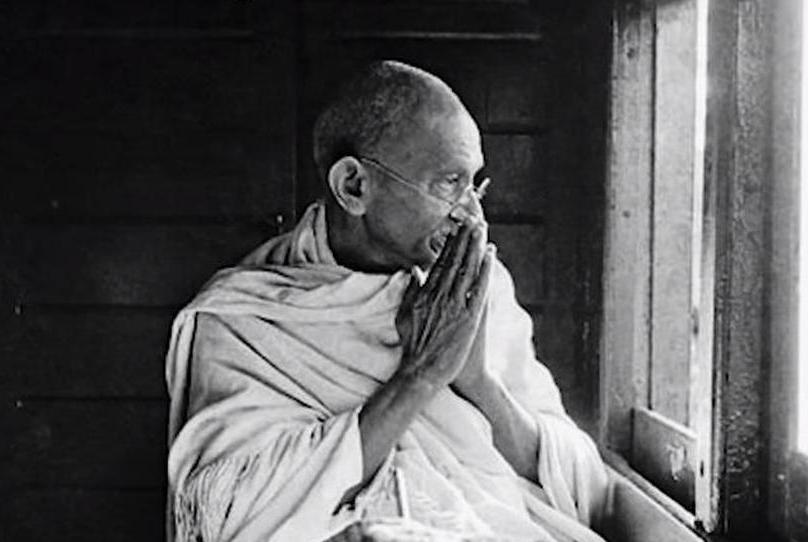Pritish Acharya
Mahatma Gandhi was finally assassinated January 30, 1948; the assassin was Nathuram Godse. He was not alone. A group was with him; the leader was Vinayak Damodar Savarkar. While Savarkar justified any means for good ends, Gandhi insisted on good means for good ends. They pursued their respective paths; Savarkar trained Godse and such people to kill Gandhi, and Gandhi insisted on the eschewing violence throughout.
This was not Godse’s first attempt on Gandhi’s life. Twice before, in July 1944 at Panchgani and January 20, 1948, at Birla House in Delhi, he, along with companions, had made unsuccessful attempts. In July 1944, Gandhi visited Panchgani for “recovering from illness after his release from his last time in prison”. Twenty young men from Poona came into Panchgani and shouted anti-Gandhi slogans and the leader of the group, Nathuram Godse, rushed towards Gandhi with a dagger. He, along with his companions, was caught and handed over to the police. “[Gandhi] asked Godse to spend eight days with him so that he could understand his point of view. Godse rejected this invitation and was allowed to go free by a magnanimous Gandhi.”
Godse planned the second attack, which came at Birla House in Delhi January 20, 1948, merely ten days before the successful attempt on Gandhi’s life. When “a deafening explosion shook the prayer ground . . . Gandhi raised his hand”. Fearlessly, he “gestured to the crowd to calm down”. Madanlal Pahwa, a companion of Godse, was caught and Godse and his co-conspirators escaped that day.
Congratulatory messages for Gandhi’s escape from death poured in. Gandhi diluted the entire incident and said, “On this occasion I have shown no bravery. If somebody fired at me point-blank and I faced his bullet with a smile, repeating the name of Rama in my heart, I should indeed be deserving congratulations.”
Further, he absolved ‘the young man’, who had been arrested from blame and said, “He had taken it for granted that I am an enemy of Hinduism. When he says he was doing the bidding of God, he is only making God an accomplice in a wicked deed. But it cannot be so. Therefore, those who are behind him or whose tool he is, should know that this sort of thing will not save Hinduism.”
This shows that Gandhi knew his assassins long before they assassinated him. He “was under no illusion that [Madanlal] Pahwa’s arrest meant the threat was over”.
Digambar Badge, a co-conspirator of Godse, turned approver in the Mahatma Gandhi assassination case. He told the police: “[Vinayak] Savarkar had decided that Gandhiji, Jawaharlal and [Shaheed] Suharwardi should be ‘finished’ and had entrusted that work to them.” Who was this Suharwardi to be ‘finished’ along with Gandhi and Nehru? He was a Muslim League leader and Premier [Chief Minister] of Bengal in 1946-47. It was evident that his government was complicit in the large-scale killing of minority Hindus in the state. Gandhi met Suharwardi and debated with him on the futility of such killings in May 1947, as he had done with Savarkar earlier. Whereas Suharwardi blamed Gandhi and the Congress for denying “justice to the Mussulmans” and “disclaimed any personal responsibility” for the communal killings, Gandhi broke in and said, “Yes, you are responsible . . . for every life lost in Bengal, whether Hindu or Muslim.”
Four months later, in early August 1947 when Independence and Partition were imminent, communal riots also became intense in Bengal. Suharwardi’s term as Premier was about to end and his grand plan for a united sovereign Bengal had become insipid. Suharwardi requested Gandhi to stay and bring peace in Calcutta. Gandhi said, “I will remain if you and I are prepared to live together . . . We shall have to work as long as every Hindu and Mussulman does not safely return to the place where he was before. We shall continue in our effort until our last breath.” Suharwardi finally agreed and both lived in slums, challenging angry crowds to break their religious unity or to melt and merge in their unity to stop mad killings and save humanity.
On August 14, 1947 before a crowd of ten thousand people in Calcutta, Suharwardi was challenged to accept the responsibility for the Great Calcutta Killing of August 1946 and he boldly accepted. Gandhi wrote later, “It was a turning point. It had a cleansing effect. I could sense it.”
It was this Suharwardi, who had converted from a communal goon into a non-violent Gandhian, and had declared, “I have myself unreservedly under Mahatmaji’s orders. Hereafter I will carry out his biddings.” Nathuram Godse and his mentor had put him in their hit list to ‘finish’ him along with Gandhi and Nehru. What is evident from the story of Suharwardi is that while Gandhi never missed any chance of transforming people into his faith, his assassins eschewed this path so violently that they targeted not only Gandhi, but all those who acknowledged reconciliation as the only workable path of life and social coexistence. It is true that Godse and his companions were not the only people who conspired and attempted on Gandhi’s life. There were many in South Africa, too. But, most accepted Gandhi’s ‘invitation’ and gracefully conceded their follies and lovingly acknowledged his greatness, unlike Godse and the new generation of his followers, who praise the killer and arrogantly enact the scene of Gandhi’s killing. Will they ever accept ‘the invitation’ and introspect their doings? This is also a question to ponder over in the 150th year of Gandhi’s birth.
This article is based on the findings of James W Douglas, American author, peace activist and a theologian, published in his book ‘Gandhi and The Unspeakable Truth: His Final Experiment with Truth’. Pritish Acharya teaches history at the Regional Institute of Education (RIE), Bhubaneswar.
e-Mail: pritishacharya63@gmail.com.
